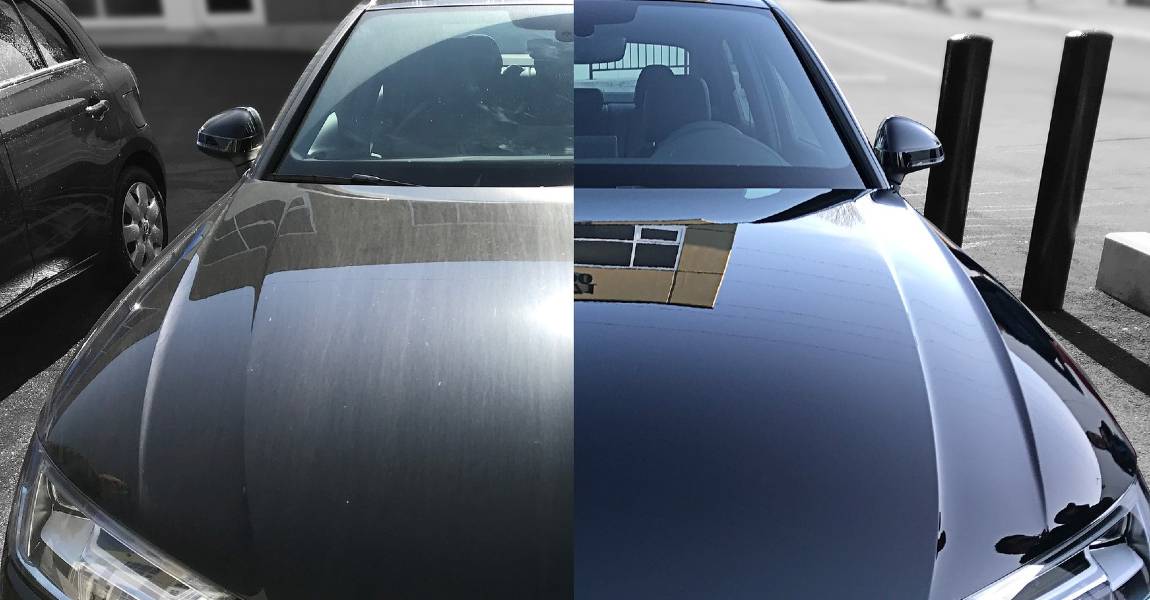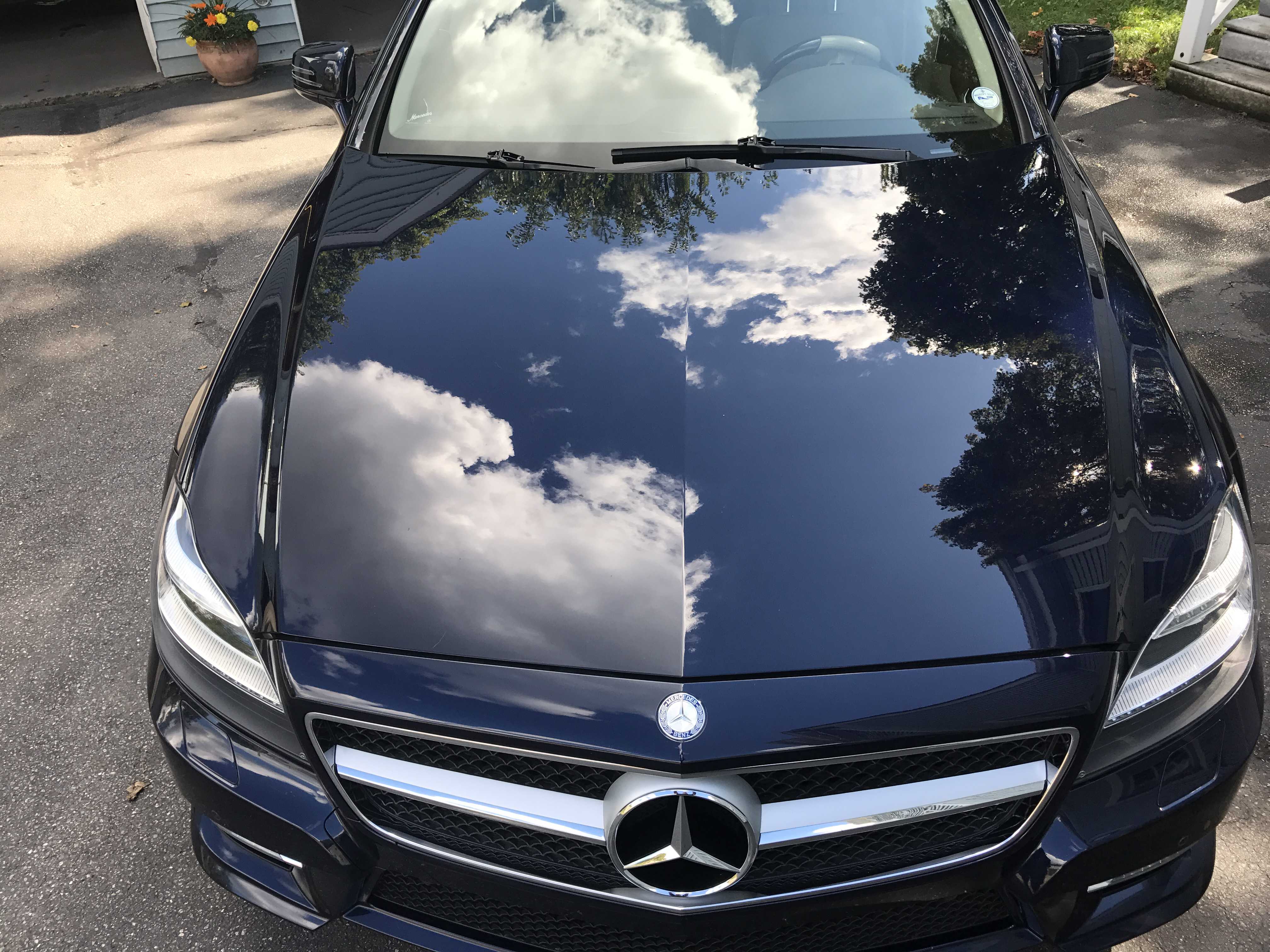The facts about Ceramic Coating Newark’s durability
Discovering the Science Behind Car Ceramic Coating and Its Protective Properties
The scientific research of car ceramic coating provides an interesting research study in sophisticated automobile protection. Composed mainly of silicon dioxide and polymers, these coverings create a robust bond with automobile paint. This interaction boosts durability versus ecological risks while using hydrophobic advantages. Nonetheless, the intricacies of just how these layers job and their long-lasting advantages continue to be much less comprehended. Unpacking these details exposes why ceramic finishings are coming to be a recommended choice for vehicle treatment
What Is Ceramic Coating?
Ceramic coating is a fluid polymer that chemically bonds to the surface area of a lorry's paint. This innovative protective layer boosts sturdiness and provides superior resistance to ecological elements. Unlike typical wax or sealants, which supply temporary protection, ceramic coatings develop a lasting shield that can hold up against harsh problems such as UV rays, acidic contaminants, and extreme weather. When applied properly, the coating develops a hydrophobic surface, creating water to bead and slide off, which aids in keeping the lorry's cleanliness. Furthermore, it uses improved gloss and deepness to the paint, making the lorry show up even more refined and dynamic. The application process usually involves thorough surface preparation, including cleansing and sprucing up, to assure peak bonding. As a result, ceramic coatings are becoming increasingly prominent among car fanatics and those looking for to secure their financial investments, assuring to keep the lorry's visual appeal while reducing the regularity of upkeep.
The Structure of Ceramic Coatings
The complex formulation of ceramic coatings mostly is composed of silicon dioxide (SiO2), which is obtained from natural resources like quartz and sand. This key component provides the foundation for the coating's longevity and protective top qualities. Along with SiO2, ceramic coverings usually consist of numerous polymers and additives that improve attachment, adaptability, and resistance to ecological variables. These substances function synergistically to produce a durable barrier against impurities such as dirt, chemicals, and UV rays.Furthermore, some formulas include titanium dioxide (TiO2) or various other nanomaterials, which can enhance the coating's hydrophobic properties, leading to improved water repellency. The exact composition can vary substantially amongst producers, influencing performance and long life. Eventually, the combination of these aspects finishes in a safety layer that not only enhances the aesthetic allure of automobiles however also serves to lengthen their life expectancy by shielding the surface area from prospective damages.
Exactly How Ceramic Coatings Work
Understanding just how ceramic finishes work includes exploring their chemical structure, which adds to their protective qualities. The application procedure is essential for achieving perfect results, while longevity and resilience factors determine the coating's efficiency in time. With each other, these aspects highlight the benefits and performance of ceramic finishings for lorry security.
Chemical Composition Explained
While numerous car owners seek lasting security for their lorries, the chemical structure of ceramic finishings plays a vital duty in their performance. These finishings primarily contain silicon dioxide (SiO2), which is originated from all-natural minerals. This substance develops a strong bond with the lorry's paint, developing a long lasting, protective layer. Additionally, several ceramic coverings include titanium dioxide (TiO2), improving their hydrophobic residential properties and resistance to UV rays. The visibility of polysiloxanes can further boost flexibility and sturdiness. With each other, these aspects contribute to the coating's ability to fend off water, dust, and contaminants, while also giving a high-gloss finish. Comprehending this chemical foundation assists car owners value the durable protection offered by ceramic coatings.
Application Refine Review
Applying ceramic layers involves a meticulous procedure that assures optimal bonding and defense for the car's surface area. Initially, extensive cleansing and purification of the car's outside are executed to eliminate dirt, gunk, and previous waxes. This step validates that the surface area is without pollutants that could hinder bond. Following this, the paint is typically brightened to enhance quality and eliminate any blemishes. As soon as prepared, the ceramic coating is used in small areas utilizing an applicator pad, permitting uniform protection. The coating is after that entrusted to cure, developing a solid chemical bond with the surface area. Proper treating times and problems are critical, as they confirm the coating attains its optimum effectiveness and protective qualities.
Longevity and Longevity Aspects
Ceramic finishings are made to supply resilient security via their sophisticated chemical make-up, which produces a durable barrier against environmental impurities. The resilience of these finishes is influenced by variables such as the thickness of the application, the high quality of the item, and the conditions under which the automobile is exposed. Top notch ceramic coatings can last numerous years, withstanding scratches, UV rays, and chemical stains. Proper maintenance, consisting of normal washing and routine reapplication, can additionally improve durability. In addition, environmental variables like environment and direct exposure to pollutants can influence the life-span of the coating. Generally, when used and preserved properly, investigate this site ceramic coatings provide outstanding durability, making them a popular option for car lovers seeking to preserve their vehicle's appearance.
Hydrophobic Qualities and Water Repellency
Hydrophobic properties are a why not look here trademark of top quality car ceramic layers, substantially improving the lorry's surface area efficiency. These finishings produce a molecular bond with the car's paint, leading to a surface area that repels water effectively. When water comes into call with a ceramic-coated surface area, it beads up and rolls off, lessening the amount of fluid that stays on the paint. This actions not just adds to a visually pleasing look however also lowers the accumulation of contaminants such as dust, gunk, and roadway salts.The enhanced water repellency leads to less complicated cleaning and maintenance, as less initiative is needed to remove undesirable materials. Additionally, the hydrophobic nature of ceramic coverings assists in preventing water spots, which can mar the surface of uncoated surface areas. On the whole, the consolidation of hydrophobic residential properties in ceramic finishings plays an essential duty in keeping the lorry's pristine appearance while streamlining maintenance.
Security Versus Scratches and UV Damages
Car ceramic coatings use considerable protection versus scrapes and UV damage. The scrape resistance system develops a sturdy layer that takes in impacts, while the UV shielding benefits help keep the vehicle's paint stability gradually. Together, these features add to a longer-lasting and visually appealing surface.
Scratch Resistance Device
Making use of sophisticated innovation, ceramic coatings offer a robust shield versus scrapes and UV damages, enhancing the longevity and appearance of vehicle surface areas. The scratch resistance device of these coverings is credited to their unique molecular structure, which creates a sturdy bond with the lorry's paint. This bond develops a hard, protective layer that can take in effects and stand up to abrasions. In addition, the smooth surface area of the coating minimizes friction, making it tough for contaminants to stick and cause scratches. The chemical structure of ceramic coverings often consists of nanoparticles that strengthen the protective layer, more enhancing its strength. As a result, vehicles treated with ceramic finishes exhibit considerably improved scrape resistance contrasted to standard wax or sealers, guaranteeing a beautiful surface in time.
UV Protecting Benefits
The safety qualities of ceramic layers expand past scrape resistance to consist of significant UV protecting advantages. These coverings produce a robust obstacle that reflects harmful ultraviolet rays, safeguarding the automobile's paint and underlying materials. Prolonged exposure to UV radiation can bring about fading, oxidation, and damage of the paint coating. By integrating ceramic layers, lorry owners can successfully alleviate these risks, preserving the i loved this visual charm and honesty of their cars. Furthermore, the UV obstructing residential properties contribute to improved longevity, decreasing the frequency of painting and upkeep. Eventually, the integration of ceramic coverings supplies a comprehensive option for protecting cars from the harmful impacts of sunlight exposure, guaranteeing a sustained, vivid look in time.
The Durability and Upkeep of Ceramic Coatings

Frequently Asked Concerns
Can Porcelain Coating Be Applied to Any Type Of Type of Car?
Ceramic coating can be related to numerous kinds of cars, consisting of cars, trucks, and motorcycles. Nevertheless, surface prep work and compatibility with particular materials are vital for optimal adhesion and performance of the coating.
Just How Much Does Ceramic Coating Normally Price?
Ceramic coating commonly costs between $500 and $2,000, depending on variables such as automobile dimension, coating high quality, and professional application. The financial investment can give lasting protection and boost the lorry's appearance gradually.

Is Specialist Application Necessary for Best Outcomes?
The requirement of expert application often depends upon desired results. Experts usually ensure appropriate surface prep work and application methods, resulting in suitable bonding and longevity of the coating, which may be testing for inexperienced people to achieve.
Can Porcelain Coatings Be Removed or Repaired?
Ceramic coverings can be eliminated or repaired, though the process might require particular solvents or techniques - Ceramic Coating Newark. Appropriate elimination is essential to prevent damage to the underlying surface, stressing the value of expert help for optimal outcomes
Exactly How Does Ceramic Coating Compare to Traditional Wax?
The comparison in between ceramic coating and typical wax discloses that ceramic finishes offer remarkable sturdiness, boosted security versus ecological pollutants, and longer-lasting sparkle, while wax calls for much more frequent application and provides less total resistance to damages.